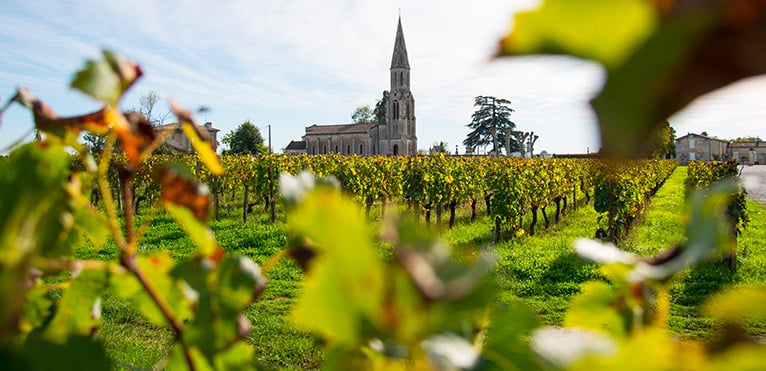
Contents
Lalande-de-Pomerol is a wine appellation in the Bordeaux region. It belongs to the Bordeaux vineyards and more specifically to the Libourne vineyards. Producing exclusively red wines, this appellation benefits from the French label of Appellation d’Origine Contrôlée (AOC), which it obtained in 1936. What’s more, this appellation is also protected by a European label, the Appellation d’Origine Protégée (AOP).
Lalande-de-Pomerol vineyards have been cultivated since the 16th century
The vineyards of Bordeaux date back to ancient times. Nevertheless, each appellation has its own particular history. Lalande-de-Pomerol wines, for example, date back to the 16th century, when the vines were cultivated by Christian monks. The history of this vineyard is also marked by the creation of the Lalande-de-Pomerol wine syndicate in 1884, which was in fact the first wine syndicate on Bordeaux’s right bank. In 1985, the Confrérie des Baillis de Lalande-de-Pomerol joined forces to promote the wines produced by the appellation.
The Lalande-de-Pomerol terroir produces wines of great diversity
The Lalande-de-Pomerol vineyards are located about 50 kilometers east of Bordeaux, near the town of Libourne. It is located on the same territory as Pomerol, jewel of the Bordeaux vineyards, from which it is separated by a stream, the Bardanne. The appellation extends over the communes of Lalande-De-Pomerol and Néac and covers an area of 1,200 hectares. In the commune of Néac, vines are grown on successive terraces that overlap one another and give relief to the geographical area, while in Lalande, vines are grown on alluvial terraces, i.e. flatter areas.
The vineyard soils are clay-limestone and vary according to location.. The soils at Lalande are composed of gravel, whereas at Néac they are composed of gravel and sand, but mainly clay. It is this multitude of compositions that enables the appellation to produce wines of great diversity. This vineyard is also characterized by the grape varieties used. The majority of our wines are made from Merlot, the most widely grown red grape variety in Bordeaux, with other local varieties such as Cabernet-Franc or Cabernet-Sauvignon, and more rarely Malbec.
Lalande-de-Pomerol are powerful, warm red wines.
The Lalande-de-Pomerol appellation produces exclusively red wines, which take on a dark ruby-garnet hue, typical of Bordeaux vineyards. As these wines do not have great ageing potential, it is preferable to consume them at a young age to fully appreciate their flavor. However, wines grown on the outskirts of the Pomerol appellation, which adjoins the Lalande-De-Pomerol estate, come into their own with age, and it may take between 5 and 10 years for them to express their best qualities.
The Lalande-De-Pomerol vineyards produce wines whose first nose is very expressive. These wines develop complex, powerful primary aromas marked by red fruit and violets. As they age, their secondary aromas develop, revealing aromas of leather, game and cocoa. Lastly, certain warm vintages will be higher in alcohol and offer fruity prune aromas on the nose. When tasting these wines, the attack is clean and lively, with strong, yet supple tannins. Finally, these wines are warm and smooth.
Lalande-de-Pomerol goes very well with red meats or small game.
These warm, powerful wines are the perfect accompaniment to red meats. For example, they go very well with bavette à la bordelaise. They can also be paired with small game dishes: quail with grapes, for example, can be enjoyed with these wines. To allow Lalande-de-Pomerol wines to express themselves at their best, we recommend drinking them at a temperature of between 16 and 17 degrees Celsius.
Exceptional vintages in Lalande-de-Pomerol
The wine’s vintage indicates the date on which the grapes were harvested, and makes it possible to classify the wines produced according to whether or not they are exceptional. For the Lalande-De-Pomerol appellation, the vintages of the millennium are 1982 and 1990. The centenary events cover the years 2005 and 2009. Finally, the exceptional vintages produced by this vineyard are 1951 and 1986.
Lalande-de-Pomerol estates guided by ambitious goals
Château Moncets
Château Moncets, located between Pomerol and Saint-Emilion, has been in existence since 1770. The property was named after General de Moncets, who became its owner almost a century later. Since 2015, the history of this vineyard has taken a real turn with the integration of “Château de Chambrun”. This transformation of the estate, which now extends over 53 hectares, is guiding it towards a total renewal, driven by the ambition to develop its tourist activity and establish itself as a winegrowing benchmark on Bordeaux’s right bank.
Bedrenne vineyard
The Bedrenne vineyard is a wine estate in Lalande-De-Pomerol with a total surface area of 13 hectares, divided into 3 appellations: AOC Lalande-de-Pomerol, AOC Saint-Emilion and AOC Bordeaux Supérieur. The Lalande-de-Pomerol AOC covers an area of 7.30 hectares. This vineyard has been run for 5 generations by the Bedrenne family and is now managed by Rémi Bedrenne. Following in his mother Monique’s footsteps, he aims to integrate the vineyard into a more environmentally-friendly production process. In fact, he has received Haute Valeur Environnementale (HVE) certification, and has also joined forces with the ONCFS to plant hedges in his vineyards to protect biodiversity.